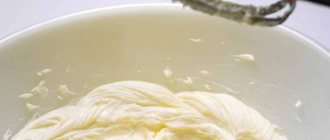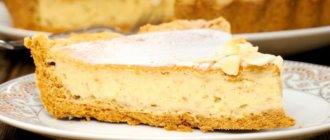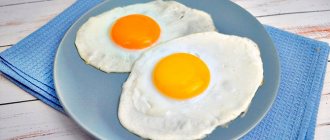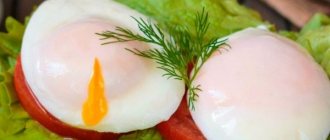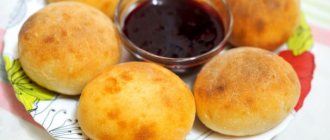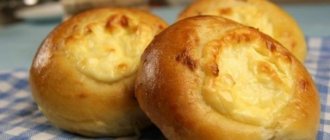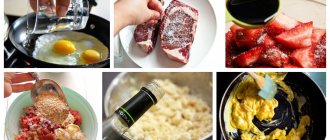I think every pastry chef has encountered mastic at least once. You may have worked with this material: covering a cake with fondant, creating figures or decorative elements. From the outside it always seems that working with mastic is easy, but in practice it causes minor difficulties. And today I will tell you how to avoid these difficulties.
Decorative elements made from mastic are again being used to create confectionery masterpieces. Mastic allows you to create an individual, unique dessert. The advantage of using mastic is that the decor made from it is suitable for decorating cupcakes and cakes, for creating children's desserts or for adults. Thanks to mastic we can create absolutely any decor.
Required Tools
Let's start with tools for working with mastic. Depending on what you are going to do with mastic, you will need different equipment:
- And the first is a special mat or board for modeling. Typically, such a rug is sold in stores for handicrafts and creativity; an excellent option is a board for modeling with plasticine;
- You will also need stacks - these are special tools for modeling and sculpting. They are usually sold in sets and come in plastic or metal. Stacks are designed for different purposes: to cut something, create irregularities and other elements necessary when creating figures;
- Metal modeling tools will help create relief. There are balls at the tip that will help create a relief of the desired size; they are also sold in sets. You can’t do without this tool when creating flowers and ruffles for a cake.
- A special mat that is necessary when creating relief on mastic. Thanks to its softness, it allows you to create the desired curves.
- If you plan to cover the cake with mastic, you will also need special “irons” to smooth the mastic on the cake.
- Cutters are an optional tool; you can use a small knife.
- Cuttings, weiners, silicone molds, textured rolling pins and mats. All this will be needed when creating flowers and an unusual relief coating for the cake.
- You will also need a rolling pin. It is better to take small acrylic rolling pins. They will allow you to roll out the mastic without any “flaws”.
Decorations made from pastry fondant: easier than you think!
Decorations made from confectionery mastic. If you're not a professional baker and haven't held fondant in your hands yet, this probably seems pretty daunting. It seemed that way to me too. That is, until I tried to make cupcake decorations out of it for our family photo shoot. And off we go :)) Now cupcakes with “chips” are my signature sweet holiday dish.
So, I’ll reveal a terrible secret! In fact, with confectionery mastic, everything is much simpler than it might seem. Mastic in practice is almost the same plasticine from which we sculpt figures with such selflessness together with children. Only edible
In fact, with confectionery mastic, everything is much simpler than it might seem. Mastic in practice is almost the same plasticine from which we sculpt figures with such selflessness together with children. Only edible Of course, mastic has its own characteristics that you just need to know and take into account when working with it. I’ll tell you about all this and how to make simple and cool decorations from mastic here.
Of course, mastic has its own characteristics that you just need to know and take into account when working with it. I’ll tell you about all this and how to make simple and cool decorations from mastic here.
We will need:
- confectionery mastic of different colors or white mastic and food coloring,
— stacks for working with mastic,
— cuttings for mastic of different shapes and sizes,
- rolling pin for rolling out mastic and textured rolling pins for applying designs,
- foam mat for modeling flowers or any springy, finely porous surface,
- confectionery sprinkles for decoration,
- a little starch.
My entire arsenal is in the photo below. In fact, even half of these tools are enough for the first experiments. But when you already get the taste, you want more of everything. And here you can choose it all from the heart.
In fact, even half of these tools are enough for the first experiments. But when you already get the taste, you want more of everything. And here you can choose it all from the heart. Let `s start!
Let `s start!
Before starting work, thoroughly knead a small piece of mastic with your hands. It should become soft and pliable. Remember that sugar mastic hardens quite quickly in air, so keep the piece that you don’t need right now on the table in a tightly closed bag. Well-kneaded mastic may stick to your hands and some tools. To prevent this from interfering with your work, use starch. Tested: delicate, finely ground Nordic potato starch is ideal!
Let's start with the simplest thing - applying a pattern using a textured rolling pin.
Roll out a small piece of well-kneaded mastic with a regular rolling pin to a layer 4-5 mm thick. Now take a textured rolling pin for mastic and roll it across the layer once, without stopping, with light pressure. You will end up with something like this 
From such a textured layer of mastic you can make a variety of decorations for cakes, cookies, and cupcakes. Take any cutters you have and use them to cut out shaped decorations.
Ta-dam! We send the finished decorations to dry.
We send the finished decorations to dry. To do this, simply place them on a flat, dry surface. In 2-3 hours they will be completely dry and ready to decorate any of your confectionery masterpieces.
To do this, simply place them on a flat, dry surface. In 2-3 hours they will be completely dry and ready to decorate any of your confectionery masterpieces.
And we will move on. Very interesting, easy to use and just cool things that are fun to tinker with :) are punches with ejector presses or plungers. With their help, you can cut out a shape and apply a design on it in one go.
This is what they look like. Do you see this pattern inside the snowflake and flower? It will be imprinted on the mastic and will make the finished mastic decoration even more interesting. You will spend a minimum of time on this.
Well, let's start by rolling out the mastic. We make a layer again, this time 2-3 mm thick. We place the plunger on the rolled out layer and first press the press. The harder you press, the clearer the print will be. But do not overdo it, so as not to push the mastic layer through. After this, without lifting or moving the plunger, press it to cut out the shape. Look, the more shaped the plunger is, the more carefully you will need to lift it from the mastic layer. The cut out figure in most cases remains in the plunger. To remove it, simply press gently on the press.
Voila These mastic snowflakes look very impressive on the cream top of New Year's or just winter cupcakes, as well as on desserts prepared for themed children's parties, for example, in the style of the cartoon Frozen.
These mastic snowflakes look very impressive on the cream top of New Year's or just winter cupcakes, as well as on desserts prepared for themed children's parties, for example, in the style of the cartoon Frozen.
Plungers come in a variety of shapes, so you can easily find the right one for your desserts. At elle-craft you can buy cuttings with a pusher in the form of snowflakes, flowers, leaves, and various lace patterns.
And the shaped holes remaining in the mastic layer can be played out like this. So, without re-rolling, you will get twice as many mastic decorations.
So, without re-rolling, you will get twice as many mastic decorations.
You can use any cookie cutter to create mastic figures. For example, these African animals will do a great job decorating safari cupcakes or any other desserts for a children's party. We adapted molds with presses in the shape of Winnie the Pooh and Tiger faces for Winnie's holiday.
Now let's make a very simple and effective flower from mastic. For this we need sugar mastic in delicate shades. If you don't have it on hand, use food coloring. I have this Americolor color Turquoise. With just one dye you can easily create a ton of shades, which is exactly what you need to create a flower.
Americolor gel dyes produce very rich colors and are very economical and easy to use. To color the mastic, add just a little dye to it and knead it well in your hands to evenly color the entire lump. To color this ball in the photo, the size of which is slightly larger than a quail egg, I didn’t even squeeze the dye out of the jar - I just collected the paint from the rim of the jar.
If you want to achieve a beautiful ombre effect in a flower, which is very popular now, take a larger piece of mastic and first add just a little dye to it. Knead the mastic well. Separate about a quarter of the colored piece and set aside. This will be the lightest tone. Add a little more dye to the remaining mastic, knead again and set aside a small part. The last piece you have left will be the darkest. Please note that after drying, the painted mastic becomes a little lighter, so when painting, make the colors a little darker and more saturated.
If you want to make delicate mastic flowers with thin petals, be sure to choose a special mastic for sculpting flowers. It is more flexible and soft, easily rolled out into a very thin layer. You can buy mastic for sculpting flowers here.
So, roll out the mastic into a thin layer no thicker than 1 mm and cut out several identical flower figures using a plunger or a simple die cutter.
Now we transfer the figure to a foam mat for modeling flowers or to any soft, finely porous surface and arm ourselves with stacks. You will find a very convenient set of stacks, which has everything you need for all cases of modeling, here. Now we need to make the petals even thinner and more vibrant. A ball-shaped tip is suitable for this.
Gently roll out all the petals with it, and then press in the middle.
If you want a “live” texture of the petals, take this tool from the stack set and easily go over the petals with it.
We repeat this with 3-4 cut out figures and collect our mastic flower. While the mastic is soft, we need to fix the flower shape we need. To do this, you can collect it in a special mold for drying flowers, or you can use improvised materials :), for example, a tablespoon or a round cookie cutter. To prevent the layers of the flower from falling apart after the mastic dries, we “glue” them together using water. Just slightly wet your finger and touch it to the center of the flower. Place the next layer of petals and press lightly.
Closer to the middle, the petals become smaller and lighter. And with them everything is the same: cut it out, roll it out in stacks, carefully attach it to the middle of the flower.
The finishing touch is the core. If you don't care about realism, just decorate the middle with an edible sugar pearl. Don't forget that it needs to be glued too!
These sugar pellet balls come in a variety of sizes and colors and you can browse them here.
If you don’t want to spend a long time fiddling with multi-layered flowers, you can make this option. Fast, minimalistic, effective 
The most pleasant thing about this creative tinkering with mastic is to lay it out and look at the result. Convenient tools, no more than an hour of time - and the mastic decorations are ready.
Convenient tools, no more than an hour of time - and the mastic decorations are ready.
The most interesting thing is that such simple things on homemade cupcakes, cakes and pies bring immense joy to both children and adults. Look at our examples of desserts decorated in this way and get creative!
Look at our examples of desserts decorated in this way and get creative!
Is it worth working with ready-made mastic?
Mastic is a confectionery “plasticine”. And it comes in different compositions, tastes, colors and purposes. You can prepare mastic yourself at home. I talk more about this here, by the way, there are recipes here too.

